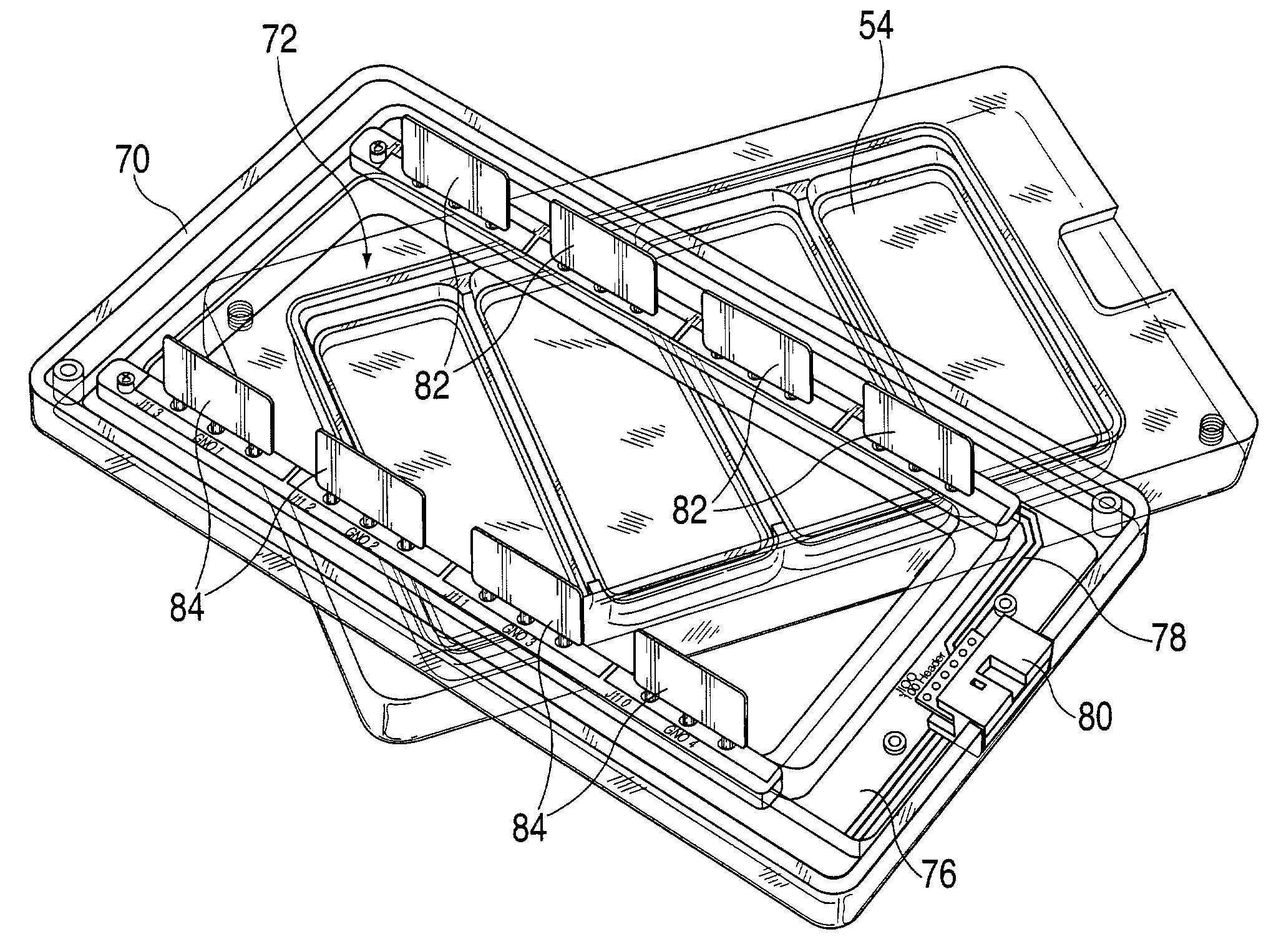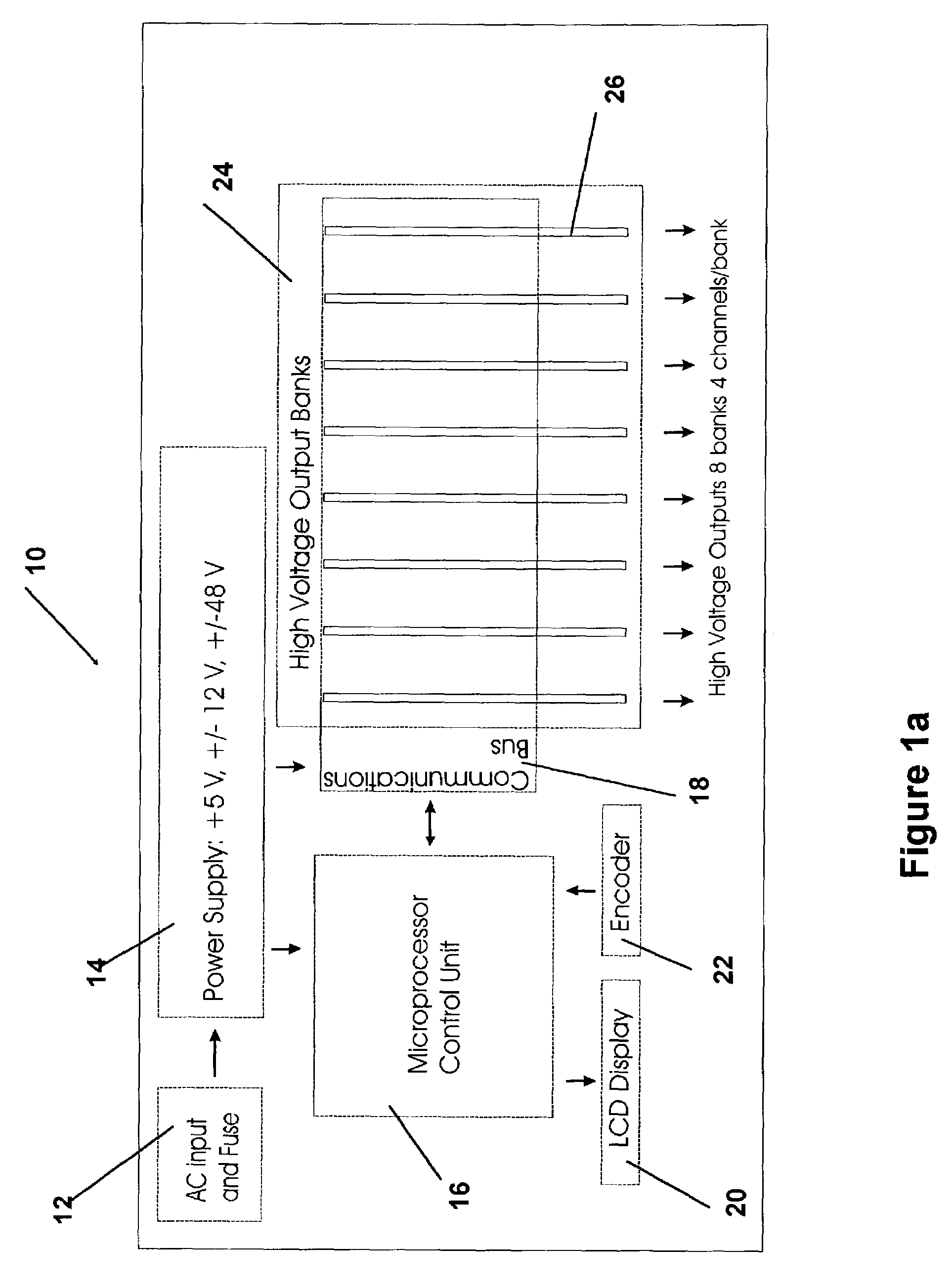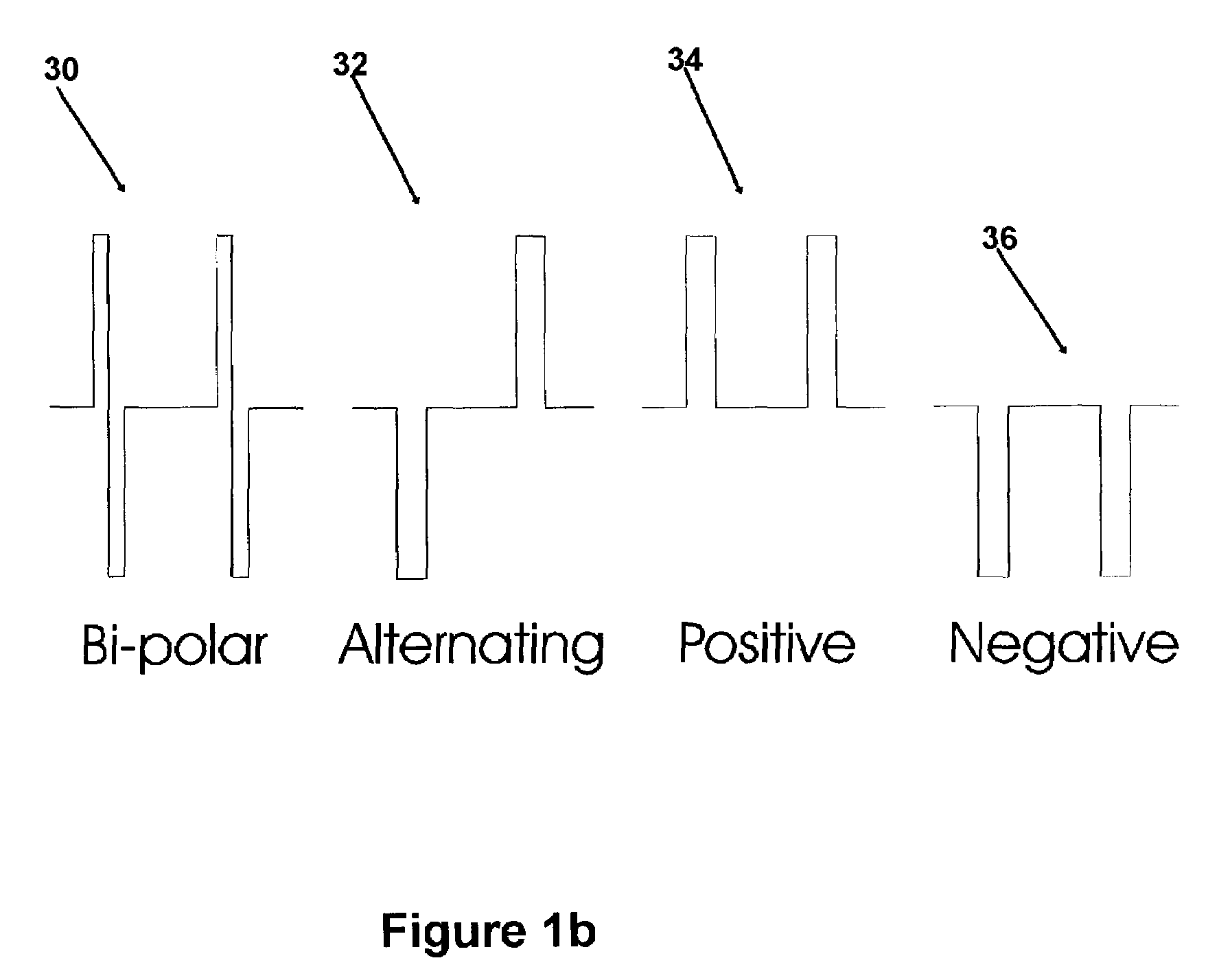Myocyte culture pacing apparatus
- Summary
- Abstract
- Description
- Claims
- Application Information
AI Technical Summary
Benefits of technology
Problems solved by technology
Method used
Image
Examples
Embodiment Construction
[0030]The present myocyte culture pacing apparatus comprises an electronic unit, which supplies the electrical pulses used to pace the myocyte cultures, and an electrode unit which mates with standard culture dishes to contact the cell cultures.
[0031]FIG. 1a of the drawings shows a block diagram of the electronics 10 of the myocyte culture pacing apparatus of the present invention. Normal AC power is input at block 12, which in turn drives a power supply unit 14 which provides the appropriate DC voltages to a microprocessor control unit 16 and through a communications bus 18 to a high voltage output bank 24, to which to high voltage boards 26 are connected. An encoder 22 is operated by the user to input the desired pacing parameters, which are displayed on an LCD display 20. The LCD display 20 displays the current frequency, voltage, polarity, pulse duration and enable status of one or more independent pulse trains. Encoder 22 is a button that turns and clicks to scroll t...
PUM
| Property | Measurement | Unit |
|---|---|---|
| Electrical conductor | aaaaa | aaaaa |
| Electric potential / voltage | aaaaa | aaaaa |
| Width | aaaaa | aaaaa |
Abstract
Description
Claims
Application Information
 Login to View More
Login to View More - R&D
- Intellectual Property
- Life Sciences
- Materials
- Tech Scout
- Unparalleled Data Quality
- Higher Quality Content
- 60% Fewer Hallucinations
Browse by: Latest US Patents, China's latest patents, Technical Efficacy Thesaurus, Application Domain, Technology Topic, Popular Technical Reports.
© 2025 PatSnap. All rights reserved.Legal|Privacy policy|Modern Slavery Act Transparency Statement|Sitemap|About US| Contact US: help@patsnap.com



